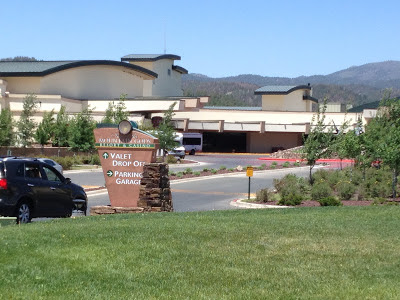Once we arrived in Tacoma, Washington, we kept noticing a large new (to us) metallic structure over by the Tacoma Dome. The Dome itself was built in 1981 and was still all shiny and new when we moved across the country to New Hampshire. Remember, we hadn't been back to Washington State since living there in the early 1980s, so there were lots of new and newish things to see.
We discovered that big metallic thing was the LeMay-America's Car Museum. You can check out a photo of the exterior on the Museum's website. Once we were inside, I made a beeline to a car that looked something like one my dad might have driven. We strolled the length of the huge building, admiring the shining antique cars lined up along either side. But that was just the beginning: The 165,000 square foot building has four floors that you visit by walking down big ramps. It can house up to 350 cars and trucks, both those from the LeMay Family collection (which eventually numbered a jaw-dropping 3,500 vehicles) and from private owners.
The cars were stunning. They were shiny. Because there were so many people there--it was Father's Day, and what better place to take Dad or Granddad--I spent my time taking close-ups of details of all that shininess.
If you want to see more photos of entire cars, you can go to the Museum's collection page.
As we walked and walked, and walked some more, all those beautiful shiny cars started to blur together, and I began to watch the people instead. Not to be sexist, but I did notice that the farther down the ramps we went, the more I could see that the women's smiles were starting to look a bit strained. The children were getting kind of crazy. And the men? They all had a kind of goofy, glazed look to them--you could tell they were remembering their first car, their first car payment, their first flat tire, their first oil change...
I could show you a sampling of the photos I took of Beez, drooling over those cars, but I don't want to embarrass him. I had to turn away myself. The look on his face... well, some things are just best not described.








































